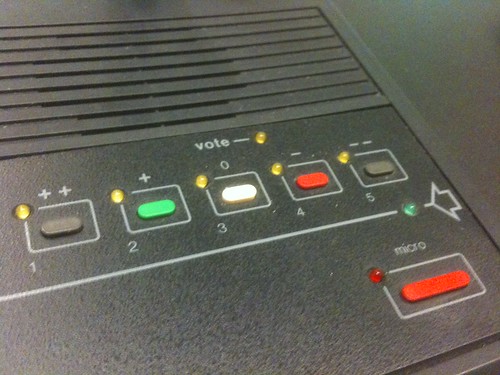 A voting interface encountered last week in Lyon at the local city council. It's interesting to note:
A voting interface encountered last week in Lyon at the local city council. It's interesting to note:
- The possibility to interact with the room using the micro feature (which stands to "microphone"),
- The arrow on the right indicate a LED that is switched on when the person enter a identification card in the device... which enable the participation in the voting process,
- The range of possibilities (from ++ to --, via the neutral 0), which surprised me as more complicated than a "yes/no" system,
- A LED (at the top) that indicates whether the person already voted.
To some extent, this device partly embeds a small portion of the representative democracy. As you can see it's fairly asymmetrical (the only feedback the user can get is the LED that show if she/he voted).
Why do I blog this? Local observation of a curious object. It would be intriguing to re-think such a device in different ways (more symmetry, open to third-parties and citizens, etc.). Pressing one of these buttons is important given that the person who is entitled to do so "represent" a bigger number of people ("citizens"). Could this be reflected in the design of the interface?